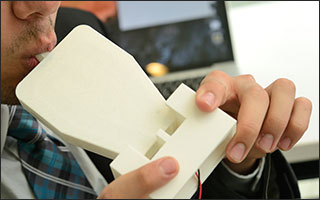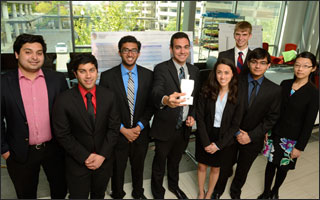The SpiroSense is different: Once patients blow into the device, two small battery-operated microphones detect the air pattern. Accompanying software processes this audio signal to determine the volume and velocity of air exhaled. Clinicians in other locations, such as hospitals, could use this information to make a diagnosis virtually. The low-cost, deskilled device could offer the possibility of care to patients unable to travel for treatment.
Early testing of the SpiroSense found that a 3-D printed version was as accurate as more expensive spirometers. The team is now looking to secure manufacturing of the device so it can be field-tested in remote areas of India. “We’ve been able to prove our prototype works,” said Finocchi. “I think we’re ready to start some field testing.”
In March, SpiroSense won Rice University’s National Undergraduate Global Health Technology Design Competition and in May tied for first place in the medical technology category (undergraduate track) at Johns Hopkins’ Business Plan Competition.
SpiroSense junior team member Rachel Yung says the project was a great learning experience. Undergraduates participate in a Design Team academic course and work with graduate students through the Center for Bioengineering Innovation & Design (CBID), which falls under the Johns Hopkins Department of Biomedical Engineering. CBID’s graduate program director, Soumyadipta Acharya, MD, PhD, was the team’s adviser.
“You’re kind of just thrown out there to figure out how to make your way through designing a product,” says Yung. “We’ve been able to network with so many different doctors and professors in a wide variety of fields.”
At Design Day, teams presented everything from an instrument to assist neurosurgeons in separating scar tissue from bone to a uterine contraction monitor that tracks labor progression in women in developing countries.
“We’re fortunate to teach the most talented students in the country, perhaps the world,” said Robert Allen, CBID’s undergraduate program director. “With a little bit of guidance, they’re able to achieve amazing things.”
— Sarah Richards


